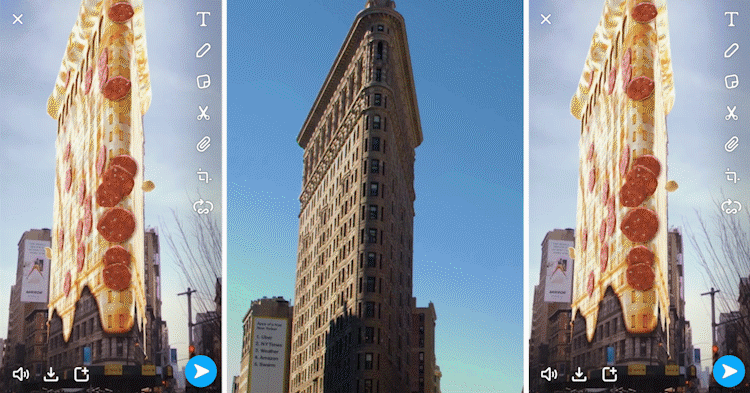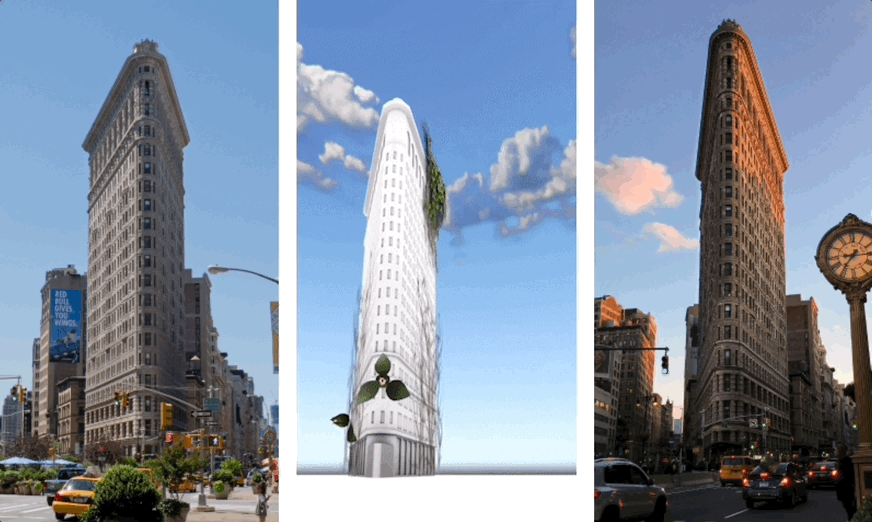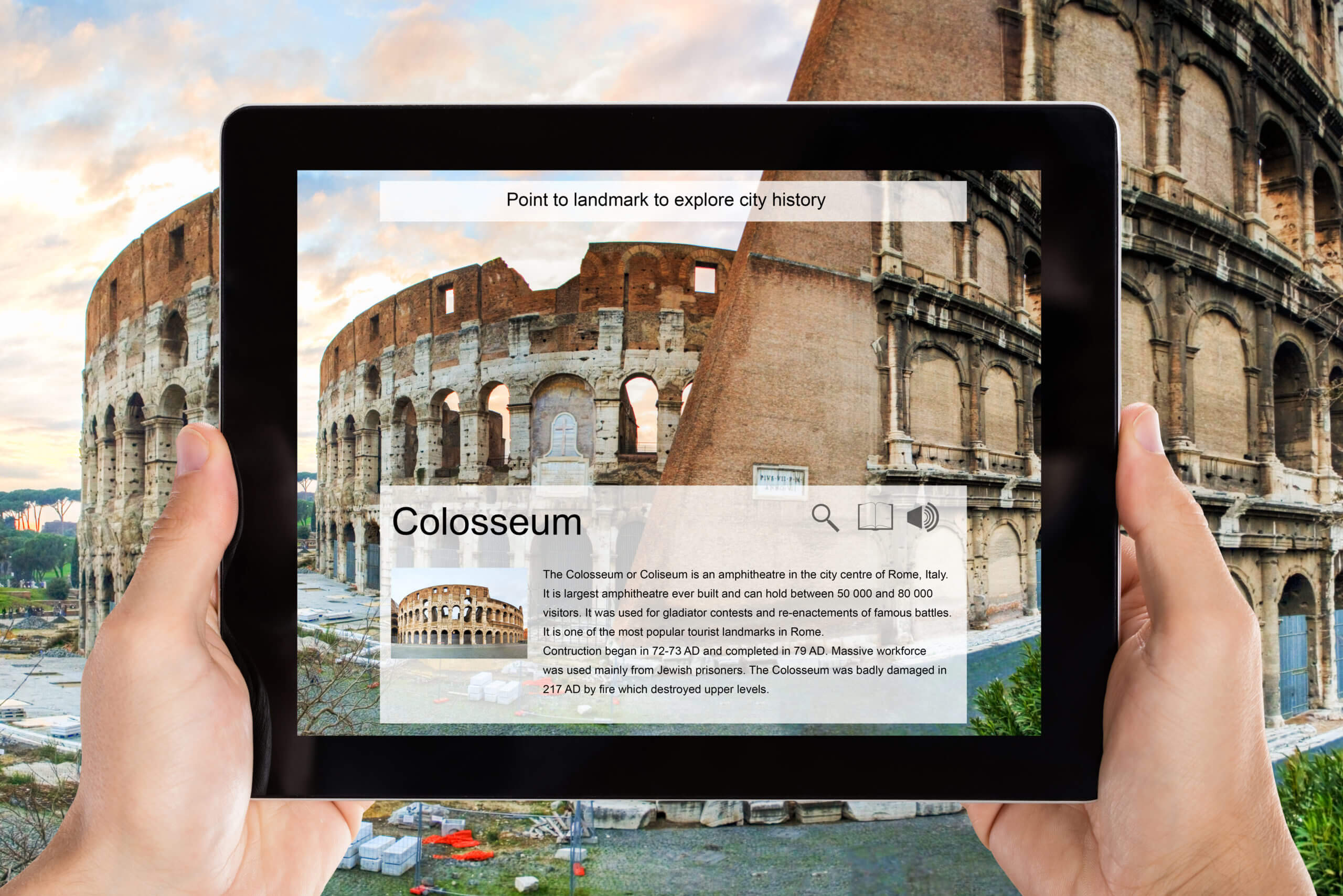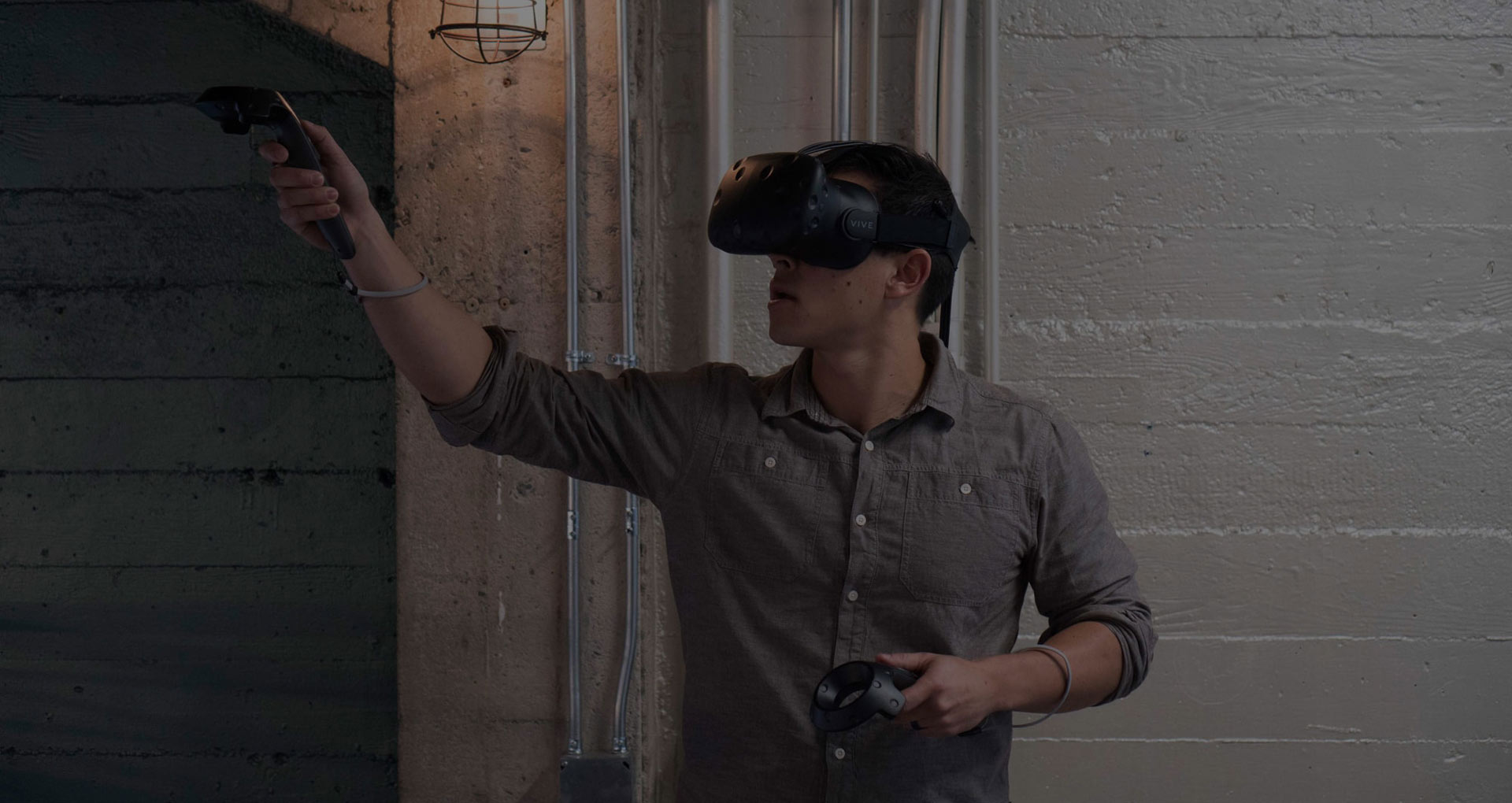Snapchat Landmarkers are Augmented Reality (AR) experiences that change the appearance of famous buildings into wild and creative artworks. Users can see the world like it’s never been seen before.
Launched in 2019, Snapchat Landmarkers currently supports 26 locations around the world, including:
- The Eiffel Tower in Paris, France
- Buckingham Palace in London, England
- The Flatiron building in New York, USA
When users point their phone cameras at these buildings using Snapchat, the buildings transform into something creatively new. For example, the Eiffel tower bends and twists, and the Flatiron building turns into a slice of pizza.
But these location based AR experiences are not fixed – artists and developers can freely create their own animations for each landmark.

How It Works
The key to the technology behind Snapchat Landmarkers is the building’s “mesh”. Using a scanner, Snapchat first captures the entire shape of the outside of the building, and turns it into a 3D model. This model, the mesh, is blank like a canvas.
Artists can then use the mesh as a canvas on Lens Studio to create whatever they want on top of it. This means that they can create new ideas from scratch, without having to re-render the mesh. Snap makes the mesh of each building freely available for developers to use for this purpose.
When a Snap user points their camera at a landmark, their smartphone has the info about the mesh and the artist’s design. With a little help from GPS, the phone determines where the user is and what they are looking at. Then the phone lines up the mesh with the building and draws the artist’s creation over it.

Challenges for Creators
Once a creator has a mesh canvas to work with, they can add to it whatever their imagination desires. However, they do still have some challenges.
One challenge is testing the rendering. If you happen to live right next to the landmark this may not be an issue. But most people don’t, and no one lives near all of them. You can still see what the landmark would look like in Lens Studio, but without a physical test, there is no way to know with “100% accuracy” how it will render.
Another challenge is the ability of buildings to change over time. Although many landmarks have some sort of protected status that prevents owners from building additions, there is no guarantee that they will always look the same from one year to the next. Restorations and repairs could take place. Also, using the technology for ordinary buildings like shops and restaurants could make this problem more likely. More on this last point in our part 2 of this series!
Challenges for Users
Like taking a regular photo or video, environmental conditions can create challenges for users. Rain, snow, or even poor lighting can make it difficult to detect the landmark and render the AR properly.
Additionally, physical hazards like construction can cause problems. The Flatiron building, for example, is sometimes covered by New York’s infamous scaffolding.
Users must also be at an appropriate distance from the landmark for the AR effect to work. Too close, and the camera won’t capture the outline of the building; too far, and the landmark will be too small.
Existing Use Cases
As works of art, AR experiences like Snapchat’s Landmarkers are arguably valuable in and of themselves. But there are a handful of practical ways that people use them as well.
The most practical existing use for Snapchat Landmarkers is in marketing. Because of their novelty, brevity, and bright colors, a new AR landmarker experience can quickly make a splash. It can function as an extra reason to visit the building or monument, stimulating more tourism traffic. Third-parties can also use it – Game of Thrones advertised their final season with an AR experience on the Flatiron building.
Businesses can also buy targeted advertising through Snap. The downside to advertising to Landmarker users is that the potential audience is tiny at any given time. But since the audience is so targeted, it could be useful for selling location-specific products, like souvenir mini Eiffel towers.
The Future of Snapchat Landmarkers
With an emerging technology like AR, the possibilities are open ended and practically endless.
One possibility is a scavenger hunt game. A scavenger hunt game would let people compete to find every landmark in a collection first. Witnessing the AR creation on their phone would count as seeing it, and perhaps the first to arrive will see a different animation than the others.
Snapchat Landmarkers also have potential as an educational resource. They could display what buildings have looked like over time, or during construction.
Architects and property developers could potentially use Snapchat Landmarkers to get a glimpse of future changes and additions. They would simply model the added structure onto the mesh, and then they could see how it looks in building’s existing environment.
We believe that Snapchat Landmarkers offers many creative present and future uses. They are part of the growing world of AR technology, and will continue to affect the way we interact with the world.



